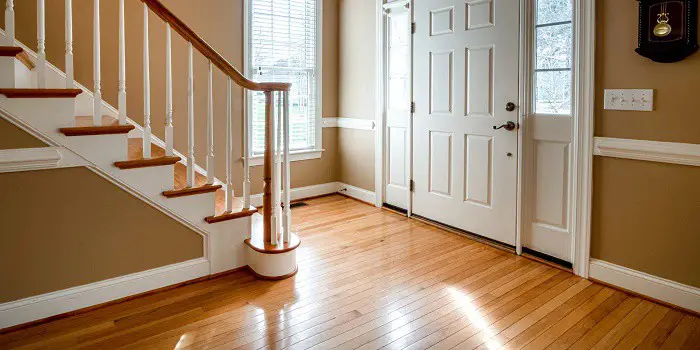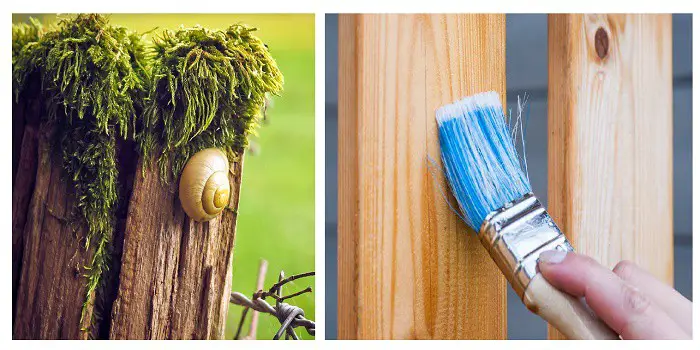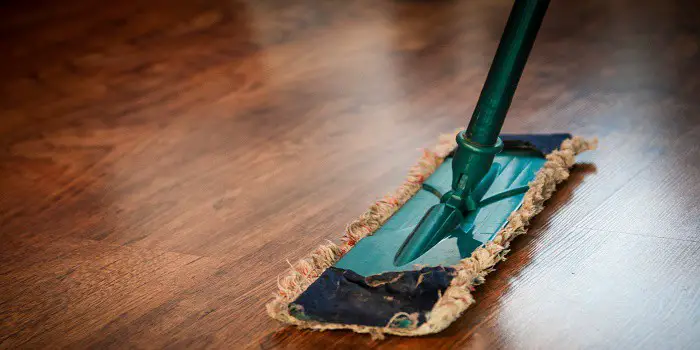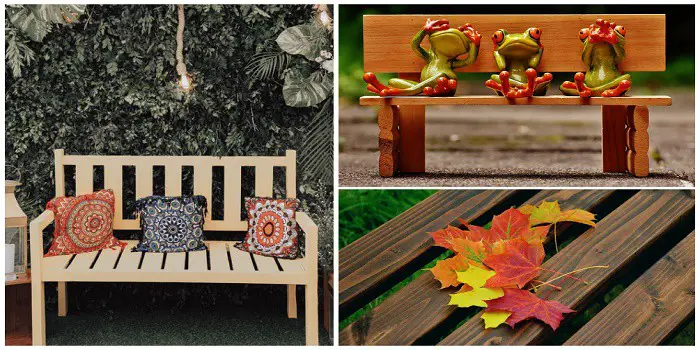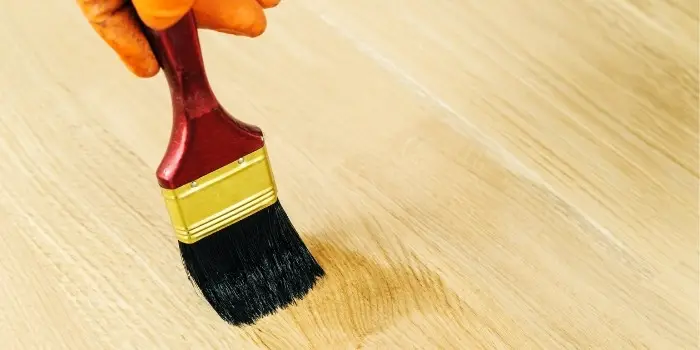
Lacquer is a type of modern wood finish that is usually applied to high-end furnishings. It dries quickly, is unaffected by water, and remains transparent through the years.
Lacquer finishes gained popularity due to the fact they don’t turn yellow with age, they require little maintenance, and keep wood well protected against being damaged by exposure to liquids.
OSHA states that some of the most common chemical solvents that are found in lacquer include: methyl ethyl ketone (MEK), toluene, methanol, xylenes, methyl isobutyl ketone (MIBK), and formaldehyde.
If you’re worried about any of these chemicals being used on your furnishings, then you can instead choose an oil- or water-based finish.
Lacquers can be compared to urethane or varnishes but are typically sprayed on instead of applied by hand with a cloth or brush.
Much like urethanes and varnishes, lacquer creates a film on the surface of the wood instead of saturating it.
The popularity and ease of use of lacquer have largely made materials like shellac obsolete since the mid-1900s.
The most common applications for lacquer include:
- Nail Polish
- Wood Finishes
- Metal Sealant
- Lacquerware
- Colorant and Protectant in the Automotive Industry
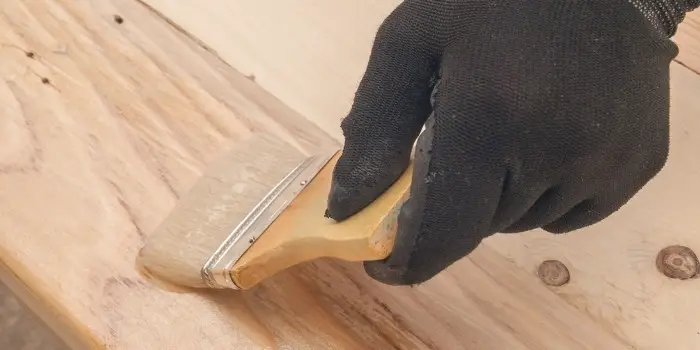
Different Types of Lacquer
There are many different types of lacquer wood finishes. Though all types of lacquer coating share some similar qualities, some factors also make them different from one another.
1. Nitrocellulose
Developed in the 1920s, nitrocellulose lacquer has been the most popular type of finish for musical instruments, especially for pianos, violins, cellos, and guitars.
It is also a popular product to coat metal and was commonly used in the automotive industry through the mid-1900s.
This type of lacquer dries to a high gloss, smooth finish, and is easy to manipulate once it has cured as compared to standard lacquer.
Nitrocellulose lacquers often have an amber-reddish tint to them while they age, offering a nice patina to some wood though it can be unappealing on some others.
For this reason, you won’t see this type of lacquer on lighter wood such as ash or maple due to the yellowing it can cause when it ages.
It is also known to crack when it ages and isn’t very protective against abrasion, chemicals, or liquids.
2. Acrylic
Acrylic lacquer was made in the 1950s and used on lighter woods such as ash, birch, and maple. It contains synthetic acrylic polymers that dry to a smooth ‘water-white’ color.
This allows craftsmen to skirt around the yellowing issues that are commonly found with nitrocellulose lacquers.
Acrylic lacquer also tends to be more scratch-resistant and generally more durable than nitrocellulose lacquer.
The most common of this type of finish is called a CAB-acrylic lacquer.
CAB-acrylic lacquers have CAB, or cellulose acetate butyrate, alongside acrylic resins and tend to be more flexible than conventional lacquers. This means that CAB-acrylic lacquers are not as prone to cracking as others.
3. Catalyzed
Usually, lacquer finishes have solvents that stop the compounds from curing. While the solvents evaporate, the lacquer begins to dry.
A catalyzed lacquer has chemicals, often some type of acid, that makes the lacquer dry to a more durable, harder finish than evaporation can allow for on its own.
Such drying chemicals are typically added by the manufacturer or added during the time of purchase.
You can also see post-catalyzed lacquers that are made by craftsmen in their shops. They are usually called conversion varnishes.
Catalyzed lacquers are pretty new to the scene and have only become popular in the late 1900s.
Before this, uncatalyzed lacquers like acrylic and nitrocellulose were the mainstream options for woodworkers.
Catalyzed lacquers offer fewer finishing problems and increased durability at a similar price as others, making them more popular in recent times.
4. Waterborne Lacquer
Waterborne lacquers act differently than other types of finishes since they have a unique composition.
They have fewer hazardous chemicals than most other types of lacquers and are considered to be more environmentally friendly as well as less toxic to the health of the user.
That said, it is important to know that waterborne lacquers tend to suffer more effects from wear and tear than other types of lacquer.
5. Urushiol Based
Urushiol-based lacquer is a chemical that is naturally located in East Asia in the resin of lacquer trees and wax trees.
This is the active compound in poison oak and ivy that causes rashes on the skin.
The resin itself has been used as a wood finish for thousands of years, originating in China more than four thousand years ago as a popular plant-based finish for wood.
This type of lacquer cures through polymerization and oxidation instead of evaporation like chemical solvents.
Urushiol lacquers are what is used in Eastern Lacquerware, which was popularly traded around the world.
It is also commonly used to finish wood on musical instruments, coffins, and furniture, though it isn’t often seen in American furniture.
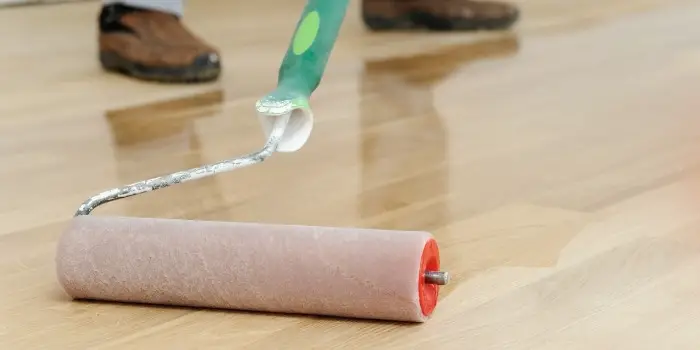
Pros and Cons of Lacquer as a Wood Finish
Lacquer has become one of the most widely used types of wood finishes and has fewer disadvantages than most as well.
User Friendliness and Drying Time
Lacquer dries fast as a wood finish. Lacquer starts to dry as it is actively being applied, and at room temperature, it can dry as quickly as 15 minutes.
This will let you apply the first lacquer coating, sand it and spray as many as two more coats all within an hour.
Other finishing materials can take hours to properly dry, with oil-based stains taking the longest, needing up to 72 hours to fully dry.
Lacquer is also user-friendly and is ready to use as it comes. It is light enough that it can be sprayed with just about any kind of air equipment and doesn’t usually need to be thinned.
Should you choose to brush it onto an item, it is applied flat without any visible brush marks left behind.
Appearance, Durability, and Affordability
Lacquer is a tough material that is capable of outlasting its competitors without chipping, cracking, or flaking.
Lacquer stays clear in color for years without any of the yellowing that you often have to worry about with shellac, polyurethane, or varnish.
It is also a little thinner than other similar products, allowing it to penetrate more deeply and give a durable seal that will keep the wood protected from the inside out.
You don’t have to use more than two coats to enjoy an attractive finish. The limited coats help to keep the buildup low and keep the cost down.
It is much less expensive than varnish, polyurethane, or shellac and also requires less labor to apply.
Its dull, medium, and high gloss options give you plenty of versatile options to work.
Fish Eye and Blush
If you don’t take certain precautions when applying lacquer, some issues can occur.
For instance, if there is any water in an airline, if the room is too cool, or if the humidity is high, blushing can become an issue.
These are white blotches that appear on the wood once the lacquer has dried, caused by moisture getting trapped in the finish.
Be sure to check airlines for moisture and ensure the room is well-vented to prevent this problem.
Any contaminants in the polish can cause fish eye defects, named due to the fish eye shape they take on.
This is caused when other products like silicone, oil, and wood cleaners get into the lacquer, often introduced through the rags you use to put on the stain or your woodworking equipment.
Orange Peel and Bubbles
Orange peel has a mottled appearance like that of an orange and often isn’t seen until the lacquer dries.
This rough texture is often caused during application by spraying too quickly over the surface or if the temperature is too cold in the room.
They are the opposite of bubbles, which are caused by warm room temperatures. If the Lacquer dries too quickly, air will get trapped under it and cause bubbles as well.
Should you have any of the above-mentioned issues with Lacquer, it’s best to stop working on the project.
Apply some test sprays to scrap wood to figure out what the problem is and then take the necessary steps to fix it before continuing the main project.

Hi, I am Mark Garner a professional carpenter, woodworker, and DIY painter. I live in the small city of Peoria, Arizona as a semi-retired woodworker. I have started this blog with a simple motive to help you with my wood experience in this sector. If you like to know more about what I love doing and how it all got started, you can check more about me here.

